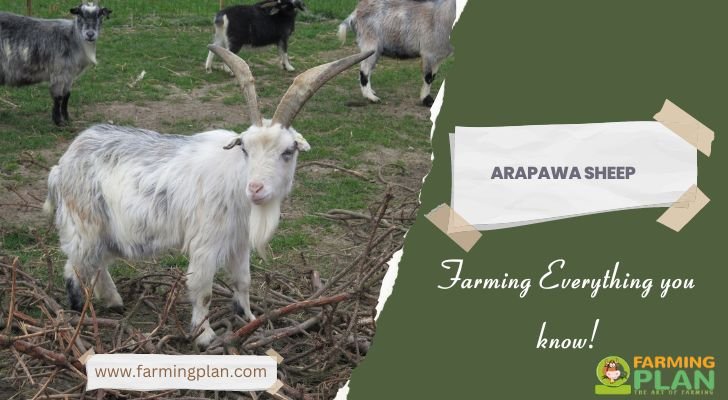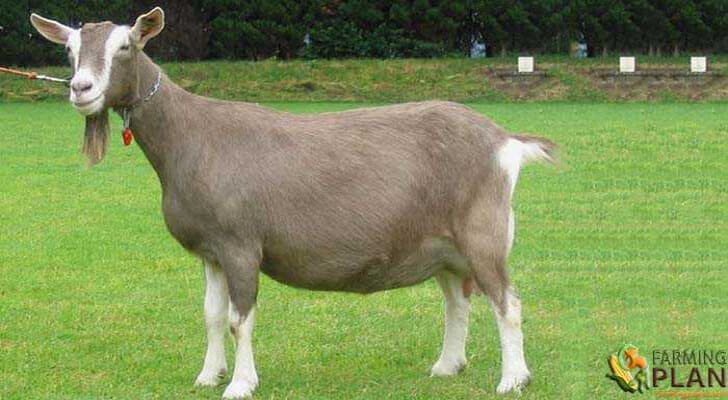Arapawa Sheep have long been revered for their high-quality wool, superior meat, and adaptability to the rugged environment of New Zealand’s Marlborough Sounds. Though it was only recently that these unique sheep began being farmed on a large scale, Arapawa Sheep is now one of the most talked about animals in the new breed of sustainable farming practices. This blog post will discuss exactly what you need to know about Arapawa Sheep farming: from its history and qualities to regulations governing production—everything you need is here! So if you’re interested in purchasing or raising your flock of Arapawas, read on and learn all you can so that you too can take part in this burgeoning agrarian movement!

History & Origin
The iconic and hardy Arapawa Sheep have a historical origin dating back to 1867 when they were initially introduced to Arapaoa Island in the Marlborough Sounds of New Zealand. Since this time, they have thrived on the island, living off its lush vegetation and becoming isolated from other sheep populations. The unique characteristics of the animals have been preserved over time due to their remote location, and today these sheep are still considered to be one of the most distinctive breeds in the world. With a strong affinity for their native island home, Arapawa Sheep is truly a treasured part of New Zealand’s history.
Characteristics
The Arapawa Sheep is an incredible breed of feral sheep found mainly on New Zealand’s Arapaoa Island. The sheep have adapted to their isolated environment, resulting in unique physical traits such as white and dark face patches, tufted tails, and horns that extend horizontally from their heads. While the origin of these animals is unknown, it is believed that they were introduced to the island in 1867 and have been living there ever since. They are generally large-bodied with good muscling, featuring attractive multi-colored fleece including everything from chocolate brown to charcoal gray and even black. On top of this, they are surprisingly adaptable creatures and hardy survivors making them ideal livestock for the smallholder farmer or homekeeper.
Feed
The Arapawa Sheep is a unique breed, with a fascinating history that began in 1867 when they were first introduced to Arapaoa Island in the Marlborough Sounds of New Zealand. Today, these feral animals feed primarily on grasses found on the island, as well as weeds and the occasional scrapings from human-inhabited farms. It is said that Arapawa Sheep are not hesitant to sample any unusual food they may come across, which means they must adapt their diet frequently to whatever is available. But one thing is certain – this hardy breed of sheep has been able to survive in their isolated corner of the world by being versatile eaters!
Usage
The Arapawa Sheep have been around for centuries, and are most notably known for their usage in the Marlborough Sounds region of New Zealand. Despite being a feral breed, this unique species is still heavily used today by farmers and ranchers alike. Their wide-ranging diet has made them a popular choice as livestock grazers and some shepherds even use them to keep their herds together and protect against predators. As well as their primary purpose, which is grazing and producing wool, they can also provide meat when necessary. Even though they have been around since 1867, the Arapawa Sheep’s usage hasn’t dwindled an ounce over the years; oftentimes it’s increased since then!
Special Feature
The Arapawa Sheep is a truly unique and special breed of feral sheep. Possessing genetic characteristics inherited from their ancestors, these animals have adapted to the environment found on Arapaoa Island in the Marlborough Sounds, New Zealand since they were first introduced there in 1867. Their resilience and adaptability have impressed many observers and made them an interesting feature of the island’s landscape. This impressive species of sheep continues to thrive in difficult conditions, making it an incredibly special feature on Arapaoa Island.
Benefits of Arapawa Sheep Farming
The Arapawa Sheep has many advantages as a domestic livestock animal. Due to their feral nature, they are well-suited to survive in remote rural locations and help prevent overgrazing in areas with lower soil fertility. Besides this, the Arapawa Sheep features a double-layered coat which provides superior protection against the cold climate of New Zealand’s Marlborough Sounds region. Furthermore, the meat from this breed is known for its distinct flavor and high demand in local markets. All these benefits combine to make Arapawa Sheep farming an excellent choice for people looking to start a livestock farm in rural areas with suitable habitats.
Common Challenges to Consider
Raising Arapawa Sheep presents unique challenges for those considering the venture. These sheep, originally from New Zealand’s Arapaoa Island and descended from South Down and Wiltshire Horn breeds, are particularly hardy in terms of their ability to thrive in isolation and harsh climates. As a result, they may be more difficult to care for in a traditional farm environment compared with other breeds. It is important to consider how to maintain high animal welfare standards along with providing appropriate nutrition that meets the breed’s special dietary needs. Additionally, common medical conditions should be monitored closely as these sheep have tendencies towards joint mobility issues and eye problems. While raising these fascinating animals presents its risks, it can also provide an incredibly rewarding experience when done properly.
What Are the Requirements for Raising
An often underrated accomplishment, successfully raising Arapawa Sheep requires dedication and commitment. Though the breed is feral by nature, the challenge for potential farmers is to domesticate and humanely raise these sheep. As their natural habitat is located on Arapaoa Island, New Zealand, a great deal of research should be done beforehand so that the proper environment can be provided to raise them. Moreover, farming Arapawa Sheep can also be an endeavor that’s rewarding because of the breed’s ability to thrive in different settings – this makes them incredibly hardy animals for any livestock-lover to keep.
How to Care for and Breed Arapawa Sheep
Caring for and breeding Arapawa Sheep requires dedication and an understanding of their unique needs. The breed originated in 1867, when feral sheep were introduced to Arapaoa Island in New Zealand’s Marlborough Sounds, and has thrived as an isolated species ever since. To care for them properly, provide a diet rich in protein, minerals, vitamins, and herbage; ensure shelter from inclement weather; and offer plenty of space for grazing. Breeding is indeed a labor of love: males should grow to a typical height of between 70-80 centimeters and females should reach approximately 40-50 cm. With the right degree of dedication, a flock of these animals can be extremely rewarding to care for – they are hardy, intelligent, active creatures that bring joy to any farm or homestead!
FAQ
What are Arapawa sheep used for?
Astrex rabbits are unique and rare in the world of pet ownership. They are a type of Rex Rabbit, which is a breed known for its velvet-like fur. The Astrex breed was first developed in Germany in 1982 when an albino rabbit was crossbred with a wild European rabbit.
Where do Arapawa sheep come from?
Arapawa sheep were first brought to Arapawa Island, located off the east coast of New Zealand’s South Island, in the 18th century. They are believed to be direct descendants of a flock of purebred Spanish Merino sheep gifted by King George III to one of his most loyal subjects in 1793. These initial Arapawa sheep were left wild on the island, and over time they adapted and evolved into their distinct breed without human intervention or selection. This has led some researchers to believe that Arapawa sheep may be one of the oldest breeds in existence today!
Do Arapawa sheep make good pets?
Arapawa Sheep are known for their gentle, docile nature and make excellent pets. They are medium to large size animals that can reach heights of up to 106 centimeters (42 inches) at the shoulder. Arapawa sheep are generally very friendly and often bond closely with those who take care of them. They also have an impressive wool coat which requires regular shearing, making them low-maintenance herd animals compared to other breeds such as Merino sheep or Gotland Pelt sheep.
Conclusion
After learning about the history, origin, characteristics and feed of Arapawa Sheep and their benefits to livestock farming, one can further take their knowledge a step further by understanding the common challenges to consider when raising Arapawa Sheep and what are the requirements for raising them successfully. Furthermore, learning about how to care for and breed these animals helps promote the conservation of this unique breed. With its remarkable features, there is no doubt that Arapawa Sheep farming could be an excellent addition to any farming venture. Whether considering as a viable option or as a conservation effort, it should certainly not be overlooked.


